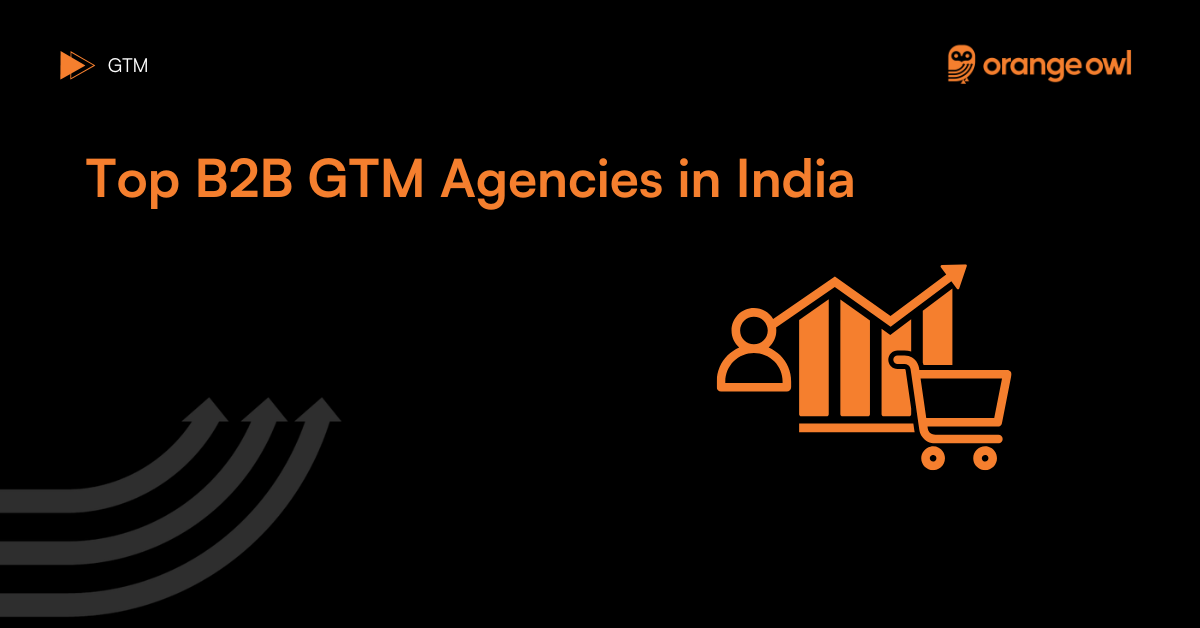Mastering the 7 Ps of the Marketing Mix for Your GTM Strategy
Vivek Goel
February 1, 2025

Table of Contents
As we continue our journey through the essentials of Go-To-Market (GTM) strategies, understanding the comprehensive marketing mix becomes crucial. While the traditional marketing mix focused on the 4 Ps (Product, Price, Place, Promotion), modern strategies have expanded this framework to include three additional elements, forming the 7 Ps of marketing. It plays a pivotal role in shaping how you effectively market your product or service. In this blog, we will delve into each of these elements, providing insights and examples to help you integrate them into your GTM strategy for maximum impact.
7 Ps of the Marketing Mix

Product
The foundation of any marketing mix is the product or service you offer. It’s essential to define your product clearly, emphasizing its features, benefits, and how it fulfills the needs of your target audience. Additionally, product positioning is critical in differentiating your product in the market, ensuring it stands out among competitors.
Example: Let’s take the example of a B2B SaaS company offering a project management tool. The product should be clearly defined in terms of its features (e.g., task management, team collaboration, real-time updates) and benefits (e.g., improved productivity, streamlined workflows). Ensuring that the product aligns with the GTM strategy means it should resonate with the market’s preferences and address their pain points effectively.
Expert Tip: Continuously gather feedback from users to refine and enhance your product, ensuring it evolves to meet changing customer needs and preferences.
Price
Determining the right pricing strategy is crucial for reflecting the value proposition of your product. This involves considering production costs, competitor pricing, and perceived value to your target audience. Your pricing strategy should support your GTM objectives while remaining competitive.
Example: For a B2B SaaS product, a tiered pricing model might be effective. Offering basic, professional, and enterprise tiers allows businesses to choose a plan that best fits their needs and budget, while also providing a clear upgrade path as their requirements grow.
Expert Insight: Conduct regular market analysis to stay informed about competitors’ pricing strategies and adjust your pricing accordingly to maintain competitiveness.
Place
Place refers to the channels through which you will distribute and sell your product. This includes both physical locations and digital platforms, as well as any intermediaries or partners involved in the distribution process. Your distribution strategy should align with your target market’s buying behaviors.
Example: If your target market primarily operates online, leveraging digital channels such as your website, third-party marketplaces, and online resellers would be most effective. For physical products, establishing partnerships with retailers or distributors can expand your reach. Additionally, consider direct sales channels like your own sales force or direct-to-consumer (D2C) platforms.
Innovative Approach: Consider omnichannel strategies that integrate online and offline experiences, providing customers with a seamless purchasing journey across all touchpoints.
By effectively managing your distribution channels and employing an omnichannel strategy, you can ensure that your product is readily accessible to your target market, thus enhancing the overall customer experience and driving sales through a GTM-Integrated sales strategy.
Promotion
Developing a comprehensive promotional strategy is essential for communicating your value proposition effectively. This may include advertising, public relations, sales promotions, and digital marketing tactics. Tailor these efforts to integrate seamlessly with your overall GTM strategy.
Example: A multi-channel promotional approach could involve content marketing through blogs and whitepapers, social media campaigns, email marketing, webinars, and participation in industry events. Each of these distribution channels should convey a consistent message that highlights your product’s unique benefits and how it solves your target audience’s problems.
Expert Tip: Utilize analytics to measure the effectiveness of each promotional tactic and adjust your strategy based on what drives the best results.
People
People play a crucial role in delivering your product or service and enhancing the customer experience. This includes employees, customer service representatives, and any other personnel who interact with customers.
Example: For a customer-centric company, investing in training and development ensures that all employees are knowledgeable, skilled, and able to deliver on your brand promise. For a B2B SaaS company, this might involve training customer support teams to handle technical inquiries effectively and provide excellent service.
Insight: Foster a company culture that values customer satisfaction and empowers employees to go above and beyond in serving clients.
Process
Streamlining the processes that customers go through to engage with your service or product is vital. This includes everything from the purchasing process to after-sales service. A smooth, efficient process improves customer satisfaction and loyalty.
Example: Implementing an intuitive onboarding process for new users of a SaaS product can significantly enhance their experience. This might include guided tutorials, easy access to support, and a clear roadmap for getting started with the software.
Pro Tip: Continuously review and optimize processes based on customer feedback and performance metrics to ensure they remain efficient and user-friendly.
Physical Evidence
Physical evidence encompasses the environment in which the service is delivered and any tangible components that facilitate the performance or communication of the service. In the case of digital products, this could be the user interface and documentation.
Example: For a B2B SaaS product, the user interface (UI) and user experience (UX) are critical components of physical evidence. A clean, intuitive interface and comprehensive, easy-to-access documentation can significantly enhance the perceived value of your product.
Insight: Regularly update and improve your UI/UX design based on user feedback and usability testing to ensure it meets user expectations and industry standards.
Conclusion
Understanding and effectively leveraging the 7 Ps within your GTM strategy can help you create a more cohesive and impactful approach to reaching your target market. By addressing each element thoughtfully and integrating them into your overall strategy, you can better position your product or service for success in the competitive B2B landscape. Implementing these principles will not only help you understand your market better but also enable you to deliver exceptional value consistently. It’s about creating a seamless and satisfying experience for your customers, from the moment they become aware of your product to their post-purchase interactions.

Frequently Asked Questions (FAQs) about 7 Ps of the marketing mix in GTM
The 7 Ps of the marketing mix is Product, Price, Place, Promotion, People, Process, and Physical Evidence. These elements help businesses formulate a comprehensive marketing strategy.
Product positioning involves defining how a product is different from competitors and why it’s the best choice for customers. It ensures the product stands out in the market, resonating with the target audience’s preferences and needs, thereby strengthening the GTM strategy.
Pricing affects the perceived value of your product and impacts profitability. A well-thought-out pricing strategy considers production costs, competitor pricing, and customer-perceived value, ensuring your product is competitively priced and aligns with your GTM objectives.
Distribution channels determine how your product reaches your customers. Effective use of distribution channels, including online platforms, physical stores, and intermediaries, ensures your product is accessible to your target market, supporting your overall GTM strategy.
Promotion involves communicating your product’s value proposition through various channels like advertising, PR, content marketing, and social media. An effective promotional strategy should be tailored to your target audience and integrated into your GTM plan to maximize reach and engagement.
Businesses can integrate the 7 Ps by thoroughly analyzing each element and aligning them with their GTM objectives. This involves ensuring product-market fit, competitive pricing, effective distribution channels, targeted promotion, skilled people, efficient processes, and strong physical evidence.
Common challenges include maintaining consistency across all elements, adapting to market changes, ensuring cross-functional alignment, and continuously gathering and acting on customer feedback to refine each aspect of the marketing mix.



